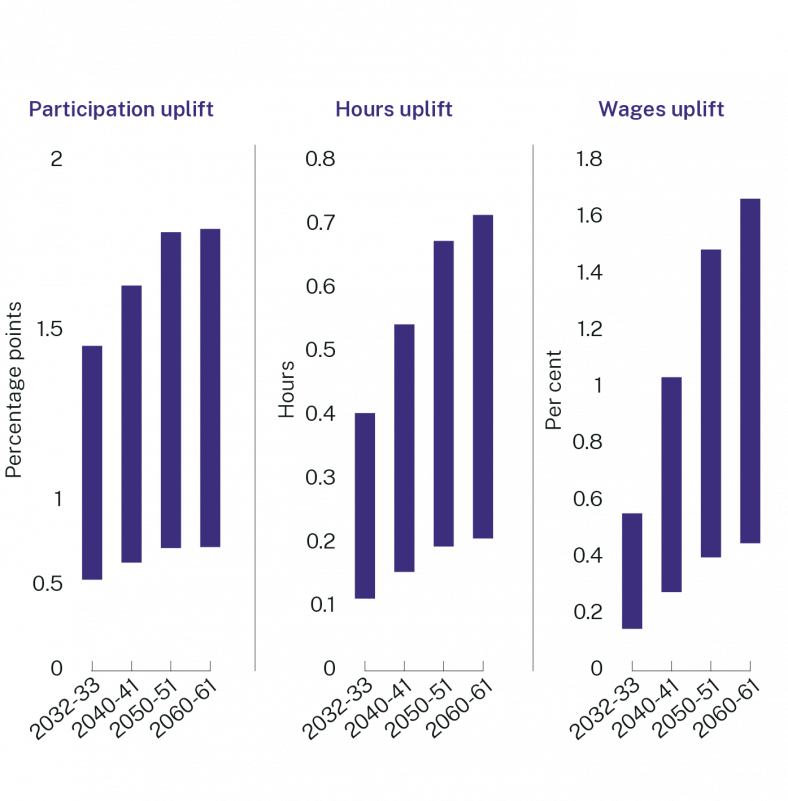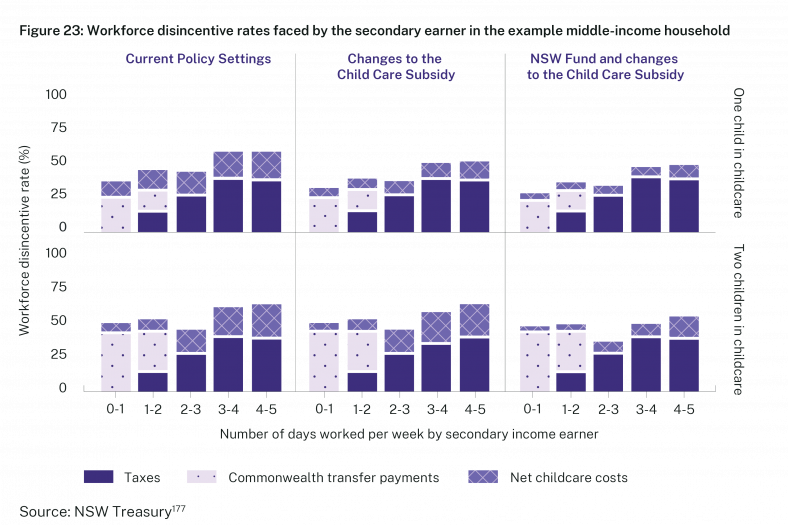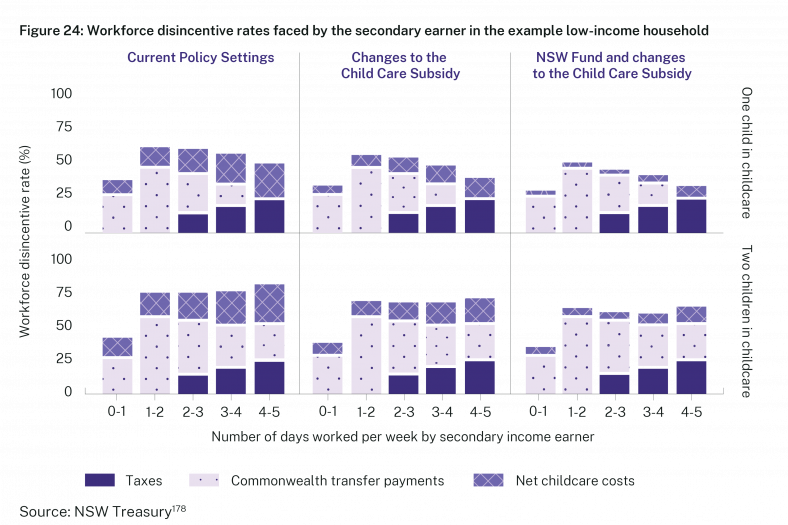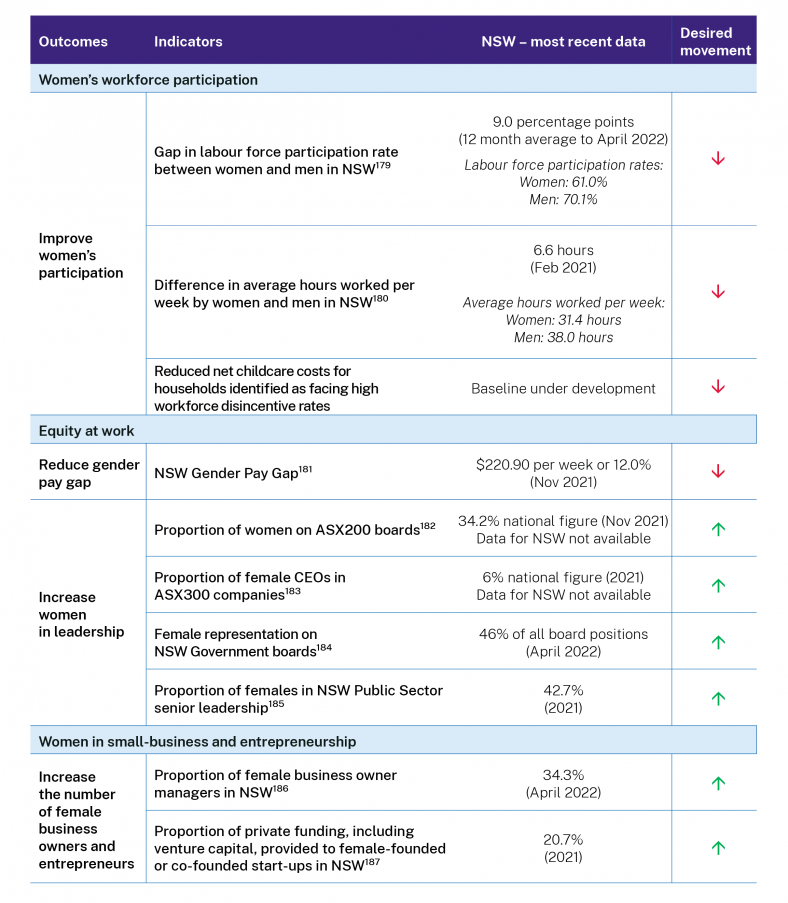Download or print
Request accessible format of this publication.

This task is no small endeavour and touches many areas of policy. Ambitious investment is required now and into the future to yield equally large returns for women, families and the NSW economy.
Such change will require a sustained effort from the NSW Government over the next decade.
This Statement lays the foundation and embeds the path for that step change.
The early childhood education and care reforms outlined in this Statement are expected to deliver a step change in the economic prosperity of the women of NSW172.
As part of the Review, NSW Treasury modelled the estimated impact of a package of the early childhood education and care reforms on:
This section sets out a summary of the modelling results, with further information found in a technical paper available on the NSW Treasury website173.
The modelling of the economic benefits applies likely behavioural responses based on international and domestic evidence.
Uncertainty in the behavioural response is reflected in the expression of projected benefits as a range, rather than a point estimate.
Assumptions have been applied regarding the detailed policy design of the early childhood education and care reforms.
The modelling results capture the integrated benefits of the Commonwealth and State measures working in a complementary manner.
While other initiatives will also contribute towards increasing women’s economic opportunity, they have not been modelled, as it is difficult to identify specific outcomes on an individual initiative level.
However, it is expected that the momentum being created by this focus on women in the workforce will drive significant change, which will be measured and monitored through the indicators identified in the next section.
The reduction in childcare costs and increase in access and availability from the package of early childhood education and care reforms, including the Affordable and Accessible Childcare and Economic Participation Fund (the Fund), the provision of universal pre-kindergarten and changes to the Child Care Subsidy in line with the policy commitments of the new Commonwealth Government, are estimated to achieve the following:
Figure 22: Estimated impact of early childhood education and care reforms on women's labour market outcomes

These improvements for women’s economic outcomes in the labour market as a result of the package of early childhood education and care reforms and the prospective changes committed by the incoming Commonwealth Government, are estimated to drive the following economic and revenue benefits:
Increased aggregate economic activity of between $4.7 billion and $17.1 billion (in real 2021-22 dollars) each year by 2032-33.
This translates into between an additional $1,200 and $4,400 income (in real 2021-22 dollars) per household per year by 2032-33.
This would increase NSW Government’s own-source revenues between $158 million and $577 million per year by the tenth year of operation, primarily driven by payroll tax (between $85 million and $308 million) and increase the size of the national GST pool by between $149 million and $540 million. This would translate into between $42 million and $153 million for New South Wales if there is no change in the distribution of GST between states.
The charts below set out the impact of the package of early childhood education and care reforms, combined with changes to the federal Child Care Subsidy as proposed by the new Commonwealth Government
Under the combination of changes to the Child Care Subsidy and the Fund, the maximum workforce disincentive rate that this household would face would be reduced to 52 per cent.
Figure 23: Workforce disincentive rates faced by the secondary earner in the example middle income household


The implementation of the reforms outlined in this Statement will be reviewed and monitored regularly, with reporting on the key indicators listed below as part of an annual Women’s Opportunity Statement in the NSW Budget.
These indicators will enable the NSW Government to clearly define the desired tangible impacts and outcomes to be achieved through the reforms, as well as measure and track the success of the reforms in delivering better economic opportunities and outcomes for women over time.
In addition to the indicators in the table, the NSW Government intends to track the progress of the proportion of NSW fathers taking parental leave and will work with industry and WGEA to develop an appropriate indicator.

Request accessible format of this publication.